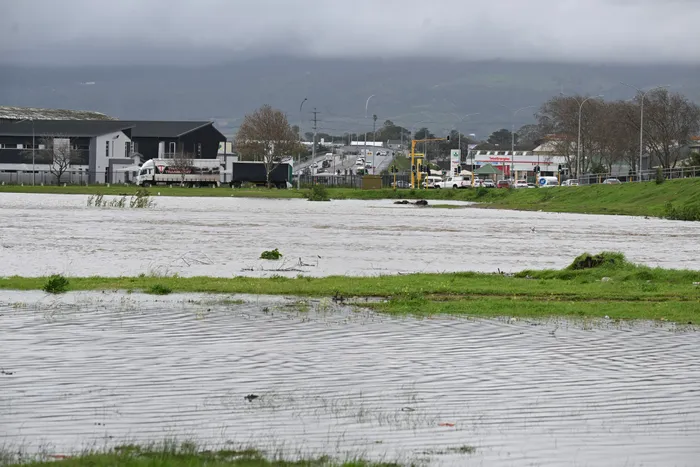Cape Town records highest July rainfall in almost 70 years

The rainfall has continued its impact this month, with the City confirming that dam levels on Monday were at 104%. This time last year, dam levels were at 99.8%. Picture: Henk Kruger / Independent Newspapers
Cape Town - Cape Town experienced record-breaking rainfall totals after a slow start to the winter rainfall season.
This was announced by the SA Weather Service on Monday, which said that rainfall accumulation in June was notably below normal, consistent with seasonal forecasts that predicted a drier winter period.
However, according to a weather bureau report compiled by senior forecaster Stella Nake and client liaison officer Robin-Lee Batties, the landscape changed drastically last month as a series of cold fronts swept through the region, some of which brought severe weather conditions and substantial rainfall.
“An analysis of rainfall data reveals that the Cape Town City (Oranjezicht) station recorded 317.6mm of rain in July, far exceeding the long-term average of 128mm for this month.
“This notable total not only exceeded the historical average, but it was also the highest monthly rainfall recorded for July since comprehensive records began in 1960. In contrast, the previous year saw only 81.8mm of rain in July, highlighting the major difference in rainfall between these two years.”
Additionally, the Cape Town International Airport station recorded the highest monthly rainfall total since its inception in July 1956, exceeding three times the average for July.
“This remarkable record underscores the intensity and impact of the multiple cold fronts,” the service said.
For example, the station in Newlands at the Kirstenbosch National Botanical Garden received more than 500mm of rain for July, making it the wettest month on record for this station since 1999.
The stations in Franschhoek, Kenilworth and Villiersdorp, with records dating back to the late 2000s, also reported significant rainfall for the month, setting new records and even surpassing the total monthly rainfall recorded during the September storm last year.
The rainfall has continued its impact this month, with the City confirming that dam levels on Monday were at 104%. This time last year, dam levels were at 99.8%.
Mayco member for water and sanitation Zahid Badroodien said that the rainfall does help the water supply, but “it’s important that residents continue to use water wisely at all times, regardless of the season or the status of the dams, etc, as this is a precious resource and it should not be wasted”.
“While we cannot rely on these rainy winter days to provide adequate supply for the full hydrological year, this rainfall will serve to increase our water security going into next summer.
“In the face of climate change and unpredictable rain, the City’s Water and Sanitation Directorate is continuing to invest in Cape Town’s New Water Programme (NWP) to help provide a resilient water-secure future for residents,” Badroodien said.
“The City appreciates the heavy rain that has been filling our dams, but we cannot allow this to give us a false sense of water security for the future.
“Cape Town has learnt that we cannot solely rely on dams for water security, so the City is busy investing in its New Water Programme. This includes projects such as desalination, groundwater schemes and reuse, which are at various stages of progress,” Badroodien said.
He explained that collectively through these projects, the City is working towards increasing supply by an extra 300 million litres of new water every day by 2030 as part of the City’s long-term Water Strategy to help reduce Cape Town’s dependence on rainfall and dam storage.
“This is over and above the current interventions to ensure optimal water use and will assist in enabling Cape Town to become resilient to climate change.”